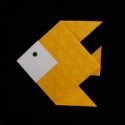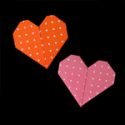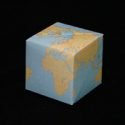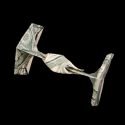Origami Musical Instruments
Acordeon/Accordion (C Pomaron)
Eddie’s Guitar (R MacDonell)
$Acoustic Guitar (AA Fehl)
Flying V Guitar (AA Fehl)
Guitar Amp (AA Fehl)
Strumming Guitarist pg 133 (R Lang)
Bassist (G Louis)
Bassist (R Lang)
Cello (J Stern)
Violin (A Hastings)
Traditional Piano (D Petty)
keyboard template (ORC)
Grand Piano (origami-club.com)
Grand Piano Greeting Card (S Aoyagi)
Pianist go to pg 134 (R Lang)
Trumpet (M van Gelder)
Origami Sax (S Alonso)
Musical Note (AA Fehl)
$ Eighth Notes (AA Fehl)

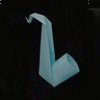
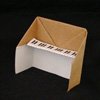
 Nov, 2011: The String Contingent is a trio from Scotland and Australia. Their new album, “TSCII”, uses Robert Lang’s origami instrumentalists on their front cover. The acoustic music for violin, guitar and double bass is a perfect match to Lang’s paper Violionist, Guitarist, and Bassist.
Nov, 2011: The String Contingent is a trio from Scotland and Australia. Their new album, “TSCII”, uses Robert Lang’s origami instrumentalists on their front cover. The acoustic music for violin, guitar and double bass is a perfect match to Lang’s paper Violionist, Guitarist, and Bassist.
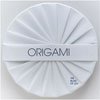 Sept, 2011: Australian-born instrumentalist, Adam Simmons calls his jazz trio Origami. As a musician and a paper folder, Simmons feels that both artforms “use simple materials and methods for creating such diversity and complexity”. Their debut CD, The Blues of Joy, is encased in a handmade origami CD case – none other than the Spiral Data Tato designed by Philip Chapman-Bell.
Sept, 2011: Australian-born instrumentalist, Adam Simmons calls his jazz trio Origami. As a musician and a paper folder, Simmons feels that both artforms “use simple materials and methods for creating such diversity and complexity”. Their debut CD, The Blues of Joy, is encased in a handmade origami CD case – none other than the Spiral Data Tato designed by Philip Chapman-Bell.
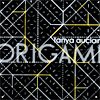 June, 2011: Singer and songwriter, Tanya Auclair released an EP called Origami. The front cover has a image of a crease pattern. “The number of basic origami folds is small but they can be combined to make infinitely intricate forms.” In a similar manner, Tanya Auclair employs minimalist means to create experimental pop music.
June, 2011: Singer and songwriter, Tanya Auclair released an EP called Origami. The front cover has a image of a crease pattern. “The number of basic origami folds is small but they can be combined to make infinitely intricate forms.” In a similar manner, Tanya Auclair employs minimalist means to create experimental pop music.
 Those who play the piano will have undoubtedly heard of French composer Erik Satie (1866 – 1925). His most famous works include Gymnopedies and Gnossienne but did you know that he composed one song called Vexations? This single-page manuscript consists of a short piece which was meant to be played 840 times in succession.
Those who play the piano will have undoubtedly heard of French composer Erik Satie (1866 – 1925). His most famous works include Gymnopedies and Gnossienne but did you know that he composed one song called Vexations? This single-page manuscript consists of a short piece which was meant to be played 840 times in succession.
In 2010, Martin Arnold and Micah Lexier used two pianos to play the Vexations score 420 times thereby completing the 840 repetitions as required by the song. After each music sheet was played, it was folded into a paper sculpture. The 840 scores was transformed into 840 origami objects thereby “giving shape to the sound”. Read more about it here.
 In 2009, Richard Meyer composed an interesting musical piece called Ear-igami. Here, musicians use paper to help create music. The paper is used as bows on violins, or used to rub the strings on cellos. Paper is also folded and snapped to create complimentary sounds. The result is a charming piece with a distinctly Japanese influence. Listen to Ear-igami here.
In 2009, Richard Meyer composed an interesting musical piece called Ear-igami. Here, musicians use paper to help create music. The paper is used as bows on violins, or used to rub the strings on cellos. Paper is also folded and snapped to create complimentary sounds. The result is a charming piece with a distinctly Japanese influence. Listen to Ear-igami here.
Richard Meyer is heavily involved in music education and currently lives in Arcadia, California.
 Singer and songwriter John Clinebell also enjoys folding origami. He was introduced to the art of paper folding in 2005 and his favorite model is the frog (by Toshikazu Kawasaki). He made a paper crane for a lady friend and this act of sharing developed into many good things including the song “Paper Cranes”:
Singer and songwriter John Clinebell also enjoys folding origami. He was introduced to the art of paper folding in 2005 and his favorite model is the frog (by Toshikazu Kawasaki). He made a paper crane for a lady friend and this act of sharing developed into many good things including the song “Paper Cranes”:
And when I’m holding you, perfect angles come together
Folding myself over you, both sides line up right
In our hands it turns awhile, then somehow the picture shows us
That’s what our paper crane looks like
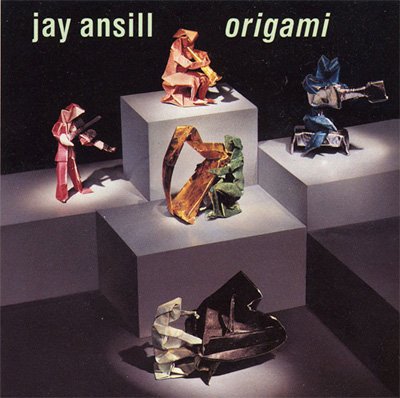 Composer and folk musician, Jay Ansill, released a CD called “Origami” which was voted as “Best Folk Recording” (1990). The front cover of the CD shows a quintet playing a piano, a harp, a violin, a trumpet, and a guitar. Interestingly, the musicians are Neale Elias‘ origami figures. Enlarge
Composer and folk musician, Jay Ansill, released a CD called “Origami” which was voted as “Best Folk Recording” (1990). The front cover of the CD shows a quintet playing a piano, a harp, a violin, a trumpet, and a guitar. Interestingly, the musicians are Neale Elias‘ origami figures. Enlarge
In addition to music, Ansill also loved origami and he has published two origami books: Mythical Beings and Lifestyle Origami. In 2004, The two books were combined as The Origami Sourcebook.
 Accomplished origami artist and author Nick Robinson also enjoys playing and recording music. Noteworth is the music he creates with the sound of paper: folding, crumpling, tearing, wobbling, and more. He is convinced that you can make a live orchestral piece with a “ream” of musicians manipulating paper.
Accomplished origami artist and author Nick Robinson also enjoys playing and recording music. Noteworth is the music he creates with the sound of paper: folding, crumpling, tearing, wobbling, and more. He is convinced that you can make a live orchestral piece with a “ream” of musicians manipulating paper.










